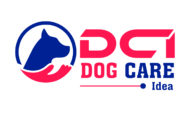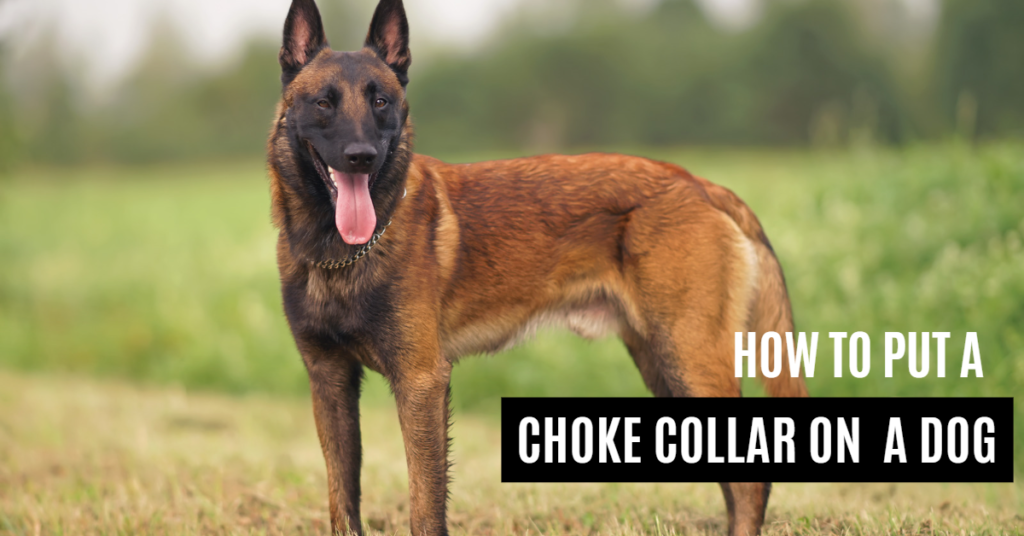Have you ever wondered how to put a choke collar on your dog effectively and safely?
If you’re a dog owner, you know how important it is to keep your furry friend safe while out and about. One tool that can help with this is a choke collar. However, putting on a choke collar may seem daunting if you’ve never done it before.
To put a choke collar on a dog, simply slip the collar over the dog’s head, ensuring that the rings are positioned on the back of the neck. Adjust the collar’s fit so that it rests comfortably, and make sure it is neither too loose nor too tight.
Whether you’re a new dog owner or looking to explore different training methods, understanding step by step guide to how to put a choke collar on a dog correctly is essential for the well-being and training of your canine companion.
How To Put On A Choke Collar – Step-By-Step Instructions
Preparing to Put on the Choke Collar
Before you begin, gather the necessary items:
- A properly sized choke collar and your dog.
- Find a quiet and distraction-free area.
- Have someone assist in holding your dog.
- Untangle and prepare the choke collar beforehand.
- Ensure your dog is in a calm state of mind.
- Give them treats and positive reinforcement.
- Let them sniff the collar before placing it on.
- Establish trust and comfort for successful training.
Introducing The Choke Collar
- Let Your Dog Sniff The Collar: Allow them to familiarize themselves with the collar’s scent and presence.
- Use A Soothing Tone: Approach your dog with confidence and speak to them in a calm and reassuring voice.
- Engage Their Attention: Use treats or a favorite toy to distract and focus your dog’s attention on you.
Placing The Choke Collar
1-Hold The Collar Properly:
Ensure you have a good grip on the collar, with the rings facing forward.
2-Position The Collar Behind Your Dog’s Head:
Slide the collar over their ears, resting it at the base of their neck.
3-Check The Orientation Of The Rings:
Confirm that the rings are positioned on the back of your dog’s neck, facing outward.
4-Gently Tighten The Collar:
Pull both ends of the collar to create a snug fit without being too tight.
5-Position It Correctly:
The collar should sit high on the neck, just below the ears, for effective communication and control.
Double-Check And Adjust
- Ensure Proper Fit: The choke collar should fit comfortably, allowing for movement without slipping off.
- Check For Two Fingers’ Worth Of Space: Make sure you can fit two fingers between the collar and your dog’s neck.
- Avoid Excessive Tightness: It’s important not to over-tighten the collar, as it should only tighten when pressure is applied.
Reward And Reinforce
- Praise Your Dog: Once the choke collar is securely in place, give your dog verbal praise and affection to reinforce positive behavior.
- Continue Positive Association: Use treats or playtime to create a positive connection between the choke collar and enjoyable experiences.
- Monitor Your Dog: Observe their comfort level and behavior while wearing the collar, ensuring it doesn’t cause any distress or discomfort.
Remember, always consult with a professional trainer for guidance on the safe and appropriate use of choke collars during your dog’s training journey.
Tips For Making The Process Easier And Safer
There are some tips and tricks you can use to make the process easier and safer for both you and your furry friend.
- Firstly, make sure you choose an appropriate location where there are no distractions or other pets around. This will help keep your dog calm and focused during the training process.
- Secondly, always approach your dog in a calm manner. Dogs can sense our emotions, so if you’re anxious or nervous about putting on the collar, they’ll pick up on that energy too. Speak softly to them while petting them to reassure them everything is alright.
- Thirdly, practice proper timing when correcting bad behavior with the choke collar. Never pull too hard or yank suddenly as this can harm their necks severely – instead use short and quick tugs of the leash when necessary.
- Fourthly, never leave the choke collar on for extended periods of time as it could cause physical injury or discomfort to your pooch; only use it during training sessions under supervision.
- Lastly but not least important: always reward good behavior! Use positive reinforcement techniques such as treats or verbal praise when they follow commands correctly to encourage good habits rather than solely relying on punishment tactics
Adjusting And Securing The Choke Collar
Adjusting and securing the choke collar is an important step in ensuring that it works effectively without harming your dog.
- Firstly, make sure that you have chosen the right size of collar for your dog. The collar should fit snugly around your dog’s neck without being too tight or too loose.
- Once you’ve put the choke collar on, gently pull on the leash to check if it tightens properly when pressure is applied. If not, adjust the length of chain by loosening or tightening it until you get a desired result.
- Next, ensure that the collar sits high up on your dog’s neck and behind their ears as this allows for maximum control while walking them. You can also use two fingers to check if there is enough space between their skin and the chain.
- To secure the choke collar, attach a leash to both rings at each end of the chain and clip them together using a carabiner clip. This ensures that there are no gaps in between which could cause discomfort or injury.
It’s important to note that choke collars should only be used during training sessions under close supervision. Always remove it once training is complete as leaving it on for prolonged periods can injure your pet.
Alternatives to the Choke Collar
Here are some alternatives to consider instead of using a choke collar for your dog:
- Martingale Collars:
These collars offer gentle control by tightening slightly when the dog pulls, preventing escape without causing choking or discomfort.
- Head Collars:
Designed to fit over the dog’s muzzle, head collars provide control by redirecting their attention and discouraging pulling without causing harm.
- Harnesses:
Harnesses distribute pressure evenly across the body, reducing strain on the neck and throat. They are particularly useful for dogs prone to respiratory issues or with delicate necks.
- Positive Reinforcement Training:
Focus on reward-based training methods that promote good behavior and obedience without relying on physical corrections or the use of specific collars.
Remember, it’s always a good idea to consult with a professional trainer to determine the best alternative for your dog’s specific needs and training goals.
Conclusion
To conclude, choke collars can be a great tool for training your dog when used correctly and responsibly.
Remember to always choose the right size and type of collar for your dog, and follow the step-by-step instructions on how to put it on properly. Additionally, consider alternative training methods such as positive reinforcement or clicker training.
Furthermore, never leave the choke collar on your dog unsupervised or for extended periods of time. It is important to ensure that your furry friend is safe and comfortable during any form of training.
FAQs
Is a choke collar bad for dogs?
Choke collars can potentially cause harm or discomfort to dogs if used improperly or excessively, making it important to exercise caution and consider alternative training methods.
How do dogs choke on collars?
Dogs can choke on collars when excessive pressure is applied to their necks, causing difficulty in breathing and potential injury to the trachea or other structures.
Will a choke collar stop my dog from pulling?
A choke collar can provide temporary control by causing discomfort when a dog pulls, but it’s important to address the underlying behavior through training for long-term results.
What age can you use a choke collar?
Choke collars should only be used on dogs that are old enough to understand and respond to training cues, typically around 6 months of age or older. It’s important to consult with a professional trainer to ensure proper usage and suitability for your dog’s age and training needs.
Do choke collars hurt?
Choke collars have the potential to cause discomfort or harm if used improperly or with excessive force.



